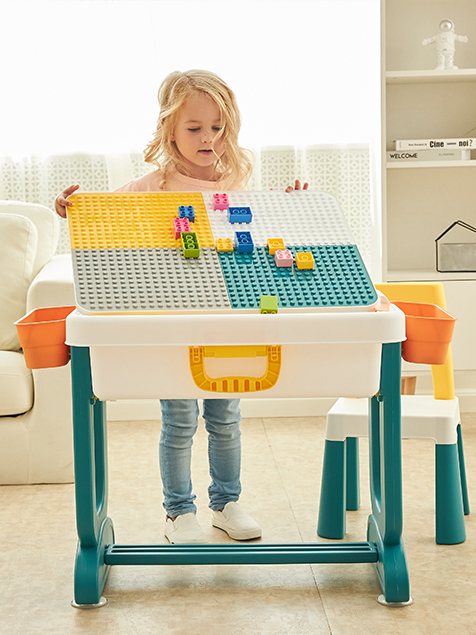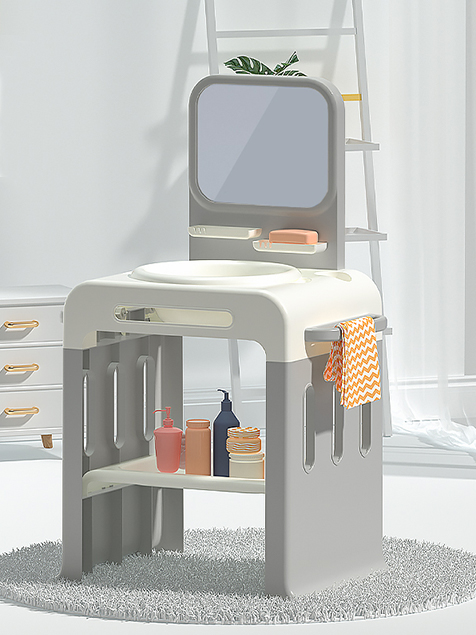Feeding bottle drying racks have become a lifesaver for parents and caregivers, providing a convenient and hygienic solution for drying baby bottles, pacifiers, and other infant feeding accessories. These racks offer an organized and clutter-free way to air-dry these items, helping to keep them clean and free from contamination.
Composition of Feeding Bottle Drying Racks
Feeding bottle drying racks are designed with a specific set of components, each contributing to their functionality and convenience:
Base Stand:
The base stand is the foundation of the drying rack, providing stability and support to the entire structure. It is usually made from food-grade plastic or BPA-free materials. The base stand often has a design that allows excess water to collect in a drip tray below.
Drying Pegs:
The drying pegs are the most prominent feature of the drying rack. These pegs are designed to securely hold various infant-feeding items, such as baby bottles, pacifiers, bottle caps, sippy cups, and breast pump accessories. They are typically made from a combination of food-safe materials like plastic or silicone, ensuring that they are safe for the items they hold.
Drip Tray:
The drip tray is located at the bottom of the base stand. Its primary purpose is to collect any excess water that drips from the washed items as they air-dry. The tray is designed with grooves and channels to facilitate water drainage. It is usually removable for easy cleaning and maintenance.
Bottle Brush Holders:
Many drying racks are equipped with bottle brush holders, providing a convenient place to store bottle brushes, bottle nipples, and other small cleaning tools. These holders help keep these items within reach, making the bottle-cleaning process more efficient.
Accessories Tray:
Some drying racks include an accessories tray, designed to hold smaller items like bottle rings, valve parts, and pacifier clips. This tray adds to the overall organization of the drying process and helps ensure that small items are not misplaced.
Manufacturing Process of Feeding Bottle Drying Racks
The manufacturing process of feeding bottle drying racks is a carefully planned and meticulous procedure, ensuring that the final product is safe, functional, and visually appealing. Here is an overview of the typical manufacturing process:
Material Selection:
The process begins with the selection of suitable materials. Food-grade plastics, silicone, and BPA-free components are commonly chosen to ensure the safety of the items that will be placed on the drying rack.
Mold Design and Fabrication:
Mold designs are created based on the chosen materials and the specific design of the drying rack. These molds are fabricated to precise specifications and can vary in complexity depending on the design and features of the rack.
Injection Molding:
The selected materials are then processed through an injection molding machine. The machine heats the materials, injects them into the molds, and cools them to create the various components of the drying rack, including the base stand, drying pegs, drip tray, bottle brush holders, and accessories tray.
Quality Control:
Quality control measures are implemented at various stages of the manufacturing process. This includes inspecting the components for defects, ensuring that they meet food safety standards, and confirming that they fit together seamlessly to create the final product.
Assembly:
Once the individual components are produced and quality-checked, they are assembled to create the complete feeding bottle drying rack. This assembly process includes attaching the drying pegs to the base stand, connecting the drip tray, and fitting any additional features like bottle brush holders and accessories trays.
Packaging:
The finished drying racks are packaged and prepared for distribution. This may involve labeling, adding user instructions, and organizing the racks for retail sale. Care is taken to ensure that the product remains hygienic and free from contaminants during the packaging process.
Distribution:
The completed drying racks are distributed to retailers, both in physical stores and online, where they are made available for parents and caregivers to purchase.

 English
English Español
Español


